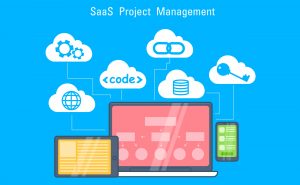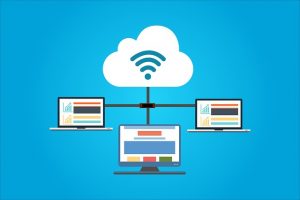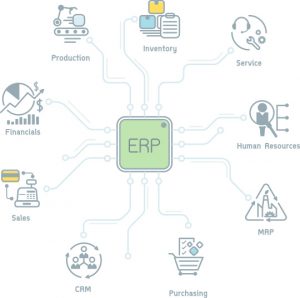Small and medium sized business (SMBs)

Small and medium sized business (SMBs) are in constant pursuit of efficiency and streamlined operations in the running of their business. it can help them gain competitive edge over their competitors and also cut business costs save time and increase the profitability of their business .
The SMB owners need to track the various business resources such as the raw materials , cash, production capacity as well as the status of the business orders and payroll to ensure that the business is running efficiently. it’s crucial for enterprises to make accurate and realistic projections and forecasts to deliver results and outcomes in their operations.
Enterprise managers need to ensure that there are continuous collaboration and communication flow of business information and data between all their business functions such as manufacturing , sales , purchases as well as communication with other business stakeholders .
SMB enterprises must ensure that their their business processes and applications integrate and run seamlessly together. business owners find all these overwhelming an so there is a need for an ERP/CRM software to help automate all their business operations.
Enterprise Resource Planning for Small medium business provides an integrated and continuously updated view of core business processes using common database to manage a small business’s entire operations .
ERP systems track business resources such as cash , raw materials , production capacity and the status of business commitments : orders ,purchase orders and payroll . The applications that make up the system share data across various departments such as manufacturing ,purchasing ,sales ,accounting that provide the date.
ERP facilitates information flow between all business function and manages connections to outside stakeholders. Functional areas support by ERP systems include Finance & Accounting’ management accounting , project management and customer relationship management .
- Financial management component : ERP program helps the small and medium enterprises manage the capital inflow and outflow , performs standard accounting & finance transactions like expenditures , general ledger, balance sheet, bank reconciliation, payments and tax management . It generates the financial statements and reports for different business units and departments.
- CRM (customer relationship management ) : CRM element to help SMBs boost customer service. manage leads , opportunities & customer issues . THE ERP program offer an overall profile of the business customers through data consolidation including data from their social media activities , historical and passt purchases, interactions with support representatives among others. CRM is integrated with sales component to push conversastions.
- Sales & Marketing: sales and marketing in ERP suite handles the workflows of sales for example, sales quotations, inquiries, orders and invoices. If more advanced, it can feature taxation rules and shipping tracker. It works together to quiken the sales cycle and bring more profits to company.
- HRM(Human Resources Management): The HRM tools such as the time tracker, time sheet , employee records database ,job profiles, and skills matrix. It may also include a payroll system and performance reviews. The payroll suite is integrated with the financial management tool to help manage wages, reimbursements, travel expenses. Some also feature or LMS ( learning management system) function.
- Manufacturing: Helps to make manufacturing efficient in specific fields , such as materials sourcing, product planning , daily production is monitoring and product forecasting. It also features the bill of material, shop floor control, master production schedule , and sales & distribution plan. It is integrated witj a solution and inventory modules especially product planning and inventory control.
- SCM (Supply Chain Management ): SCM help manage the flow of products from production to the consumer and, time to time , returns or recalls and vice-versa. It helps in automation processes and streamlines the entire supply chain to make it adaptive to the dynamic market movement.
- Inventory : The inventory which is also known as material management component and helps measure stock targets, make replenishments standard and help in other inventory goals. It uses the serial numbers of the products to track and trace items in the organization. It is integrated with the purchase element.
- Purchasing: Helps with the business processes involved in procurement of raw materials including supplier listings, purchase orders, good receipt notes, stock updates’ and quotation requests & analysis. It must integrate tightly with SCM and/or inventory elements.
- Customization: ERP match the critical business workflows and departments and have customizable tools ,localized dashboards as well as configurable workflows to allow units and departments to define their specific goals and set the ERP according to their parameters.
- Reporting and Dashboards (BI – Business Intelligence : It help to generate financial statements that are compliant to a particular region. ERP allows in-system query and smart filters put together with real-time data. It must help generate quick and ad-hoc reports that adjust to the ever evolving business needs and changes . have standard dashboard that can allow the user to mash up quantitative Vs. qualitative data at user, role and department levels , displaying KPIs with drag-down links.
- Integration: ERP work with all the existing business applications seamlessly . It enables the user to integrate system-to-system that is ERP to existing CRM or HRMS, module to system that is , ERP payroll to the existing HRMS and file transfer competencies that are , exporting or importing PDF , DOC, JPG, CSV files.
- Industry-specific: ERP system possesses industry – specific features such as retail, government, healthcare and nonprofit and more.
Small and medium scale enterprises ,(SMBs), should digitize their business operations with the ERP for SMBs to help reduce cost and operations inefficiencies and to bost the productivity of their enterprise.


























